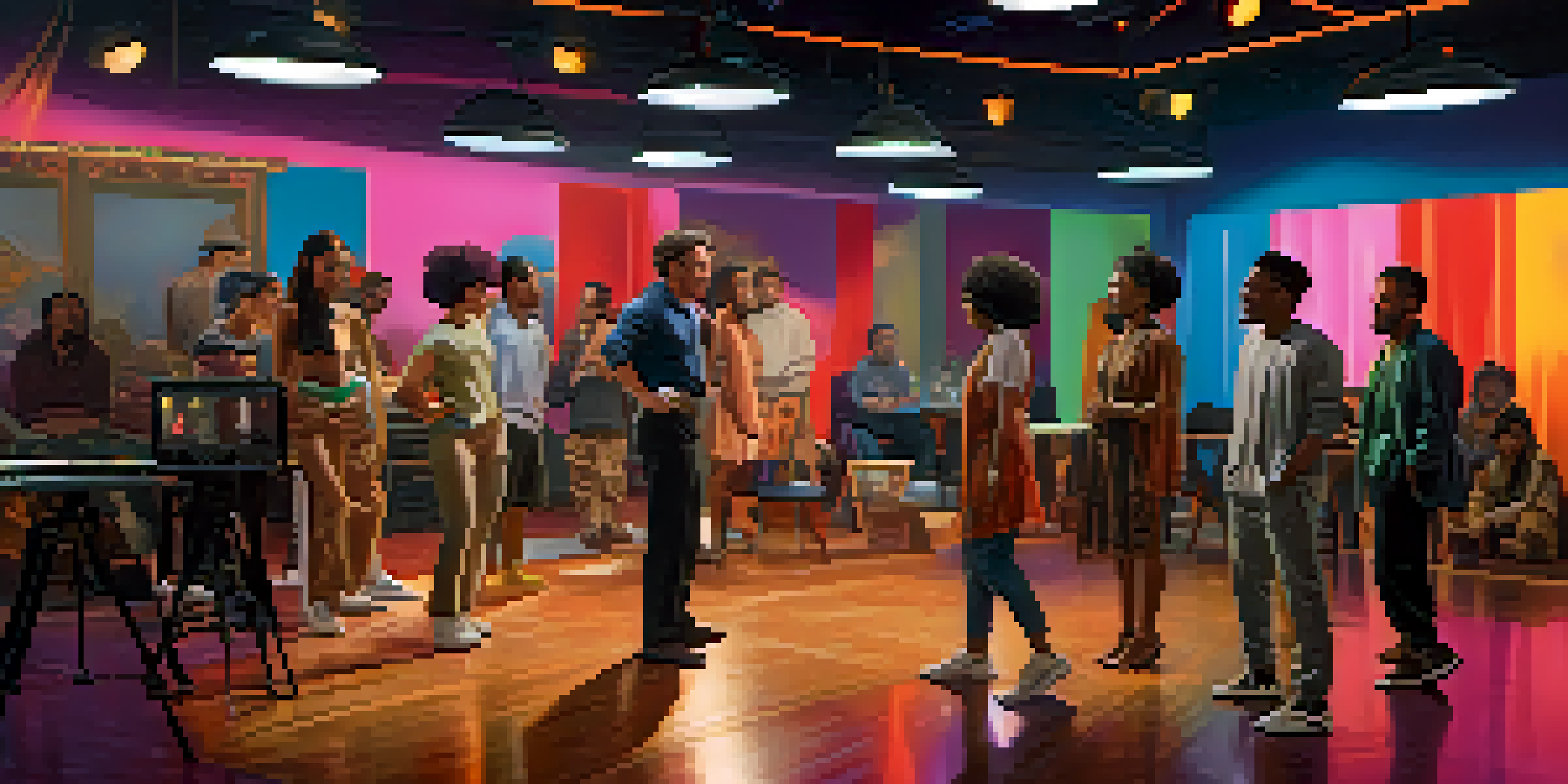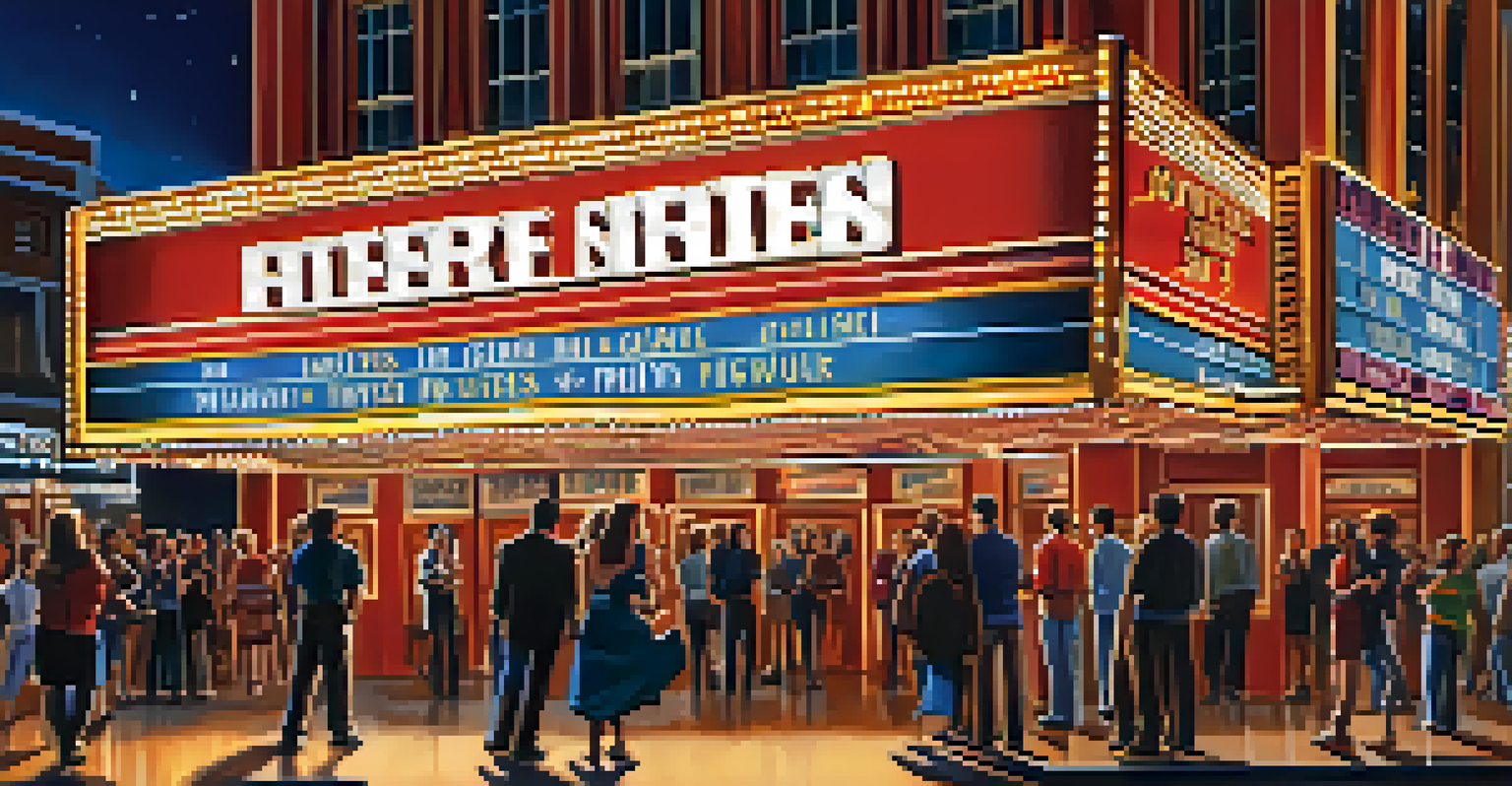Diversity in Casting: A New Standard for Hollywood Films

The Importance of Diversity in Film Casting Today
Diversity in casting is not just a trend; it’s becoming a standard. It reflects the richness of our society and allows underrepresented voices to be heard. Films that embrace diversity can resonate more authentically with audiences, fostering a deeper connection to the stories being told.
Diversity is not a set-aside program. It's a way of life.
When films showcase a variety of backgrounds and experiences, they provide a more accurate portrayal of the world we live in. This not only enriches the narrative but also invites viewers from all walks of life to see themselves represented on screen. It’s about creating a space where everyone feels valued and included.
Moreover, diverse casting can lead to increased box office success. Audiences today are more likely to support films that reflect their own experiences, and studios are beginning to recognize the financial benefits of inclusive storytelling.
Historical Context: Where Hollywood Started
Hollywood has a long history of typecasting and underrepresentation, particularly for actors of color and other marginalized groups. For decades, many talented performers were overlooked simply because they didn’t fit the narrow molds set by casting directors. This lack of representation meant that many stories went untold.

In the past, the film industry often relied on stereotypes, which not only misrepresented cultures but also perpetuated harmful narratives. For instance, characters from certain ethnic backgrounds were often relegated to side roles, lacking depth and complexity. This hurt both the actors and the audiences who craved genuine representation.
Diversity Reflects Society's Richness
Diverse casting not only enriches narratives but also helps audiences see themselves represented on screen.
Understanding this historical context is crucial to appreciating the shift that is occurring today. As more voices advocate for change, Hollywood is slowly starting to dismantle these outdated practices, paving the way for a more inclusive future.
Recent Trends: A Shift in Industry Standards
Recently, we’ve seen a noticeable shift in how casting decisions are made. Filmmakers are increasingly prioritizing diversity, recognizing its impact on storytelling and audience engagement. Projects that once might have cast white actors in lead roles are now being reimagined with a more inclusive approach.
The best way to predict the future is to invent it.
For example, remakes and adaptations are being cast with an eye toward diversity, allowing for fresh interpretations of classic stories. This not only breathes new life into familiar narratives but also offers opportunities for actors from diverse backgrounds to shine.
This trend is not without its challenges, as some audiences may resist changes to beloved characters. However, the overall response has been overwhelmingly positive, with many praising the industry for its efforts to reflect the world as it truly is.
Success Stories: Films That Got It Right
Several films have emerged as shining examples of successful diverse casting. For instance, 'Black Panther' not only shattered box office records but also celebrated African culture in a way that resonated with audiences worldwide. It proved that diversity can be both commercially viable and critically acclaimed.
Similarly, 'Crazy Rich Asians' made headlines for its all-Asian cast, showcasing a story that had been largely absent from mainstream cinema. This film opened doors for more stories centered around Asian experiences, demonstrating the power of representation.
Hollywood's Shift Towards Inclusivity
Recent trends show a growing commitment to diverse casting, leading to fresh interpretations and broader representation in films.
These success stories highlight that when diverse voices are given the opportunity to tell their stories, everyone benefits. Audiences leave the theater feeling seen and heard, while studios enjoy the fruits of their investment in inclusive casting.
Challenges and Backlash: The Other Side of the Coin
Despite the progress, the journey towards diversity in casting is not without its hurdles. Some critics argue that non-traditional casting choices can lead to tokenism, where diverse actors are included merely to check a box. This can undermine the very authenticity that diverse casting aims to achieve.
Additionally, there’s a segment of the audience that resists change, often citing nostalgia for traditional casting choices. This backlash can make it difficult for studios to navigate their casting decisions, as they weigh the need for inclusivity against audience expectations.
Nonetheless, it’s essential to recognize that these challenges are part of a growing conversation about representation. As more people engage in this dialogue, the industry can better understand how to balance diverse representation with authentic storytelling.
The Role of Audiences in Promoting Diversity
Audiences play a crucial role in the push for diversity in casting. By supporting films that prioritize representation, viewers send a clear message to studios about the importance of inclusive storytelling. This grassroots movement has the potential to drive significant change within the industry.
Social media platforms have become powerful tools for audiences to voice their opinions. Hashtags and campaigns calling for diverse representation have gained traction, making it impossible for studios to ignore the demand for change. This grassroots advocacy fosters a sense of community and shared purpose among viewers.
Audience Support Drives Change
When viewers actively back films that prioritize representation, they influence studios to embrace diverse storytelling.
Ultimately, when audiences actively seek out and support diverse films, they contribute to a broader cultural shift. This collective action can influence future casting decisions and inspire filmmakers to continue prioritizing authenticity in their storytelling.
Looking Ahead: The Future of Casting in Hollywood
As we look to the future, it’s clear that diversity in casting is more than just a fleeting trend; it’s here to stay. With ongoing discussions about representation and inclusivity, the industry is poised for significant transformation. New voices and stories are continually emerging, offering fresh perspectives on familiar narratives.
The success of diverse films signals a demand for more inclusive casting practices. Filmmakers are recognizing the value of tapping into a wider talent pool, and casting directors are becoming more intentional about their choices. This evolution promises a richer and more varied cinematic landscape.

By embracing diversity, Hollywood can not only enrich its storytelling but also create a more equitable industry. As more diverse stories find their way to the big screen, audiences can look forward to a future where everyone’s story has a chance to shine.